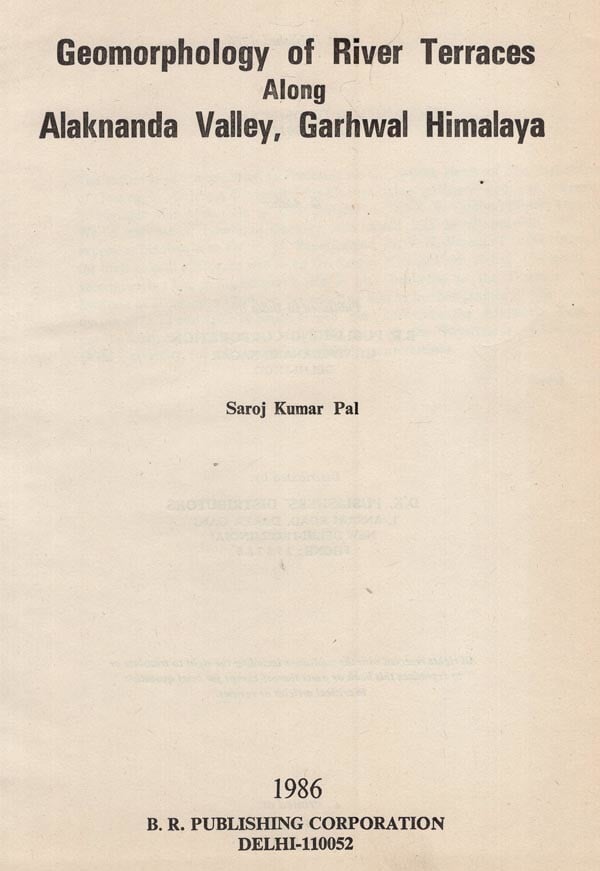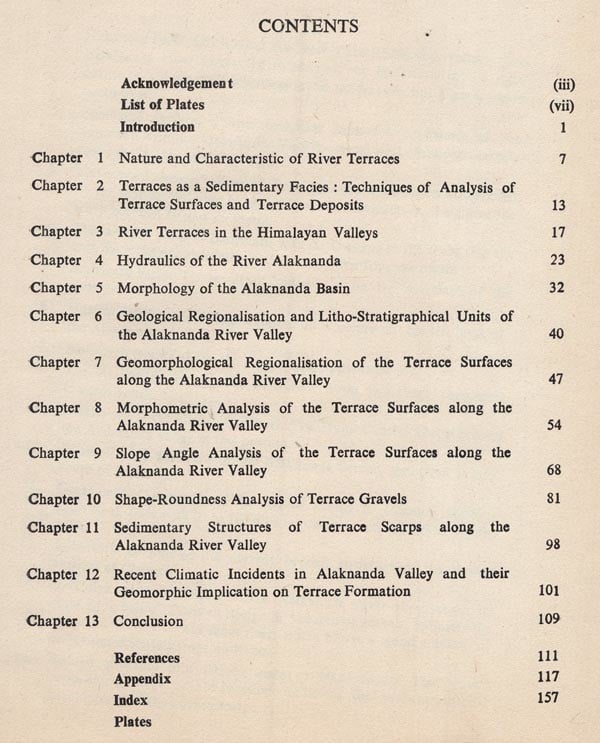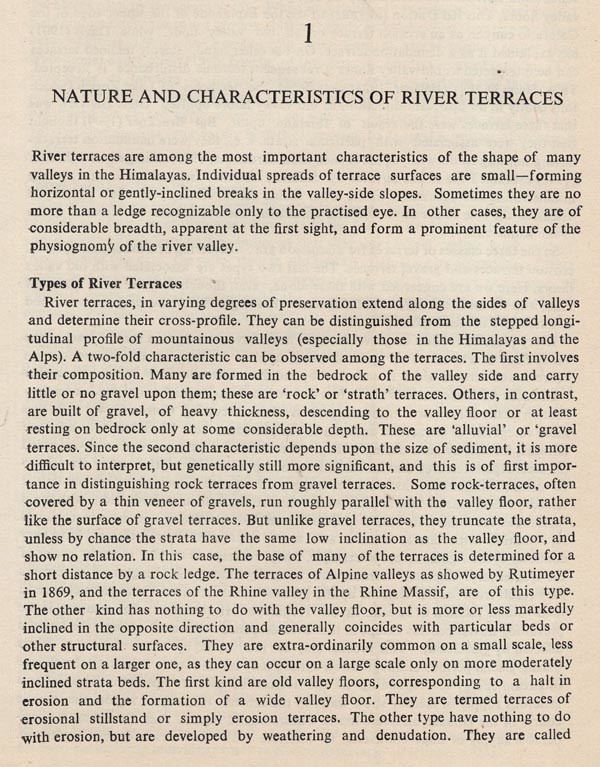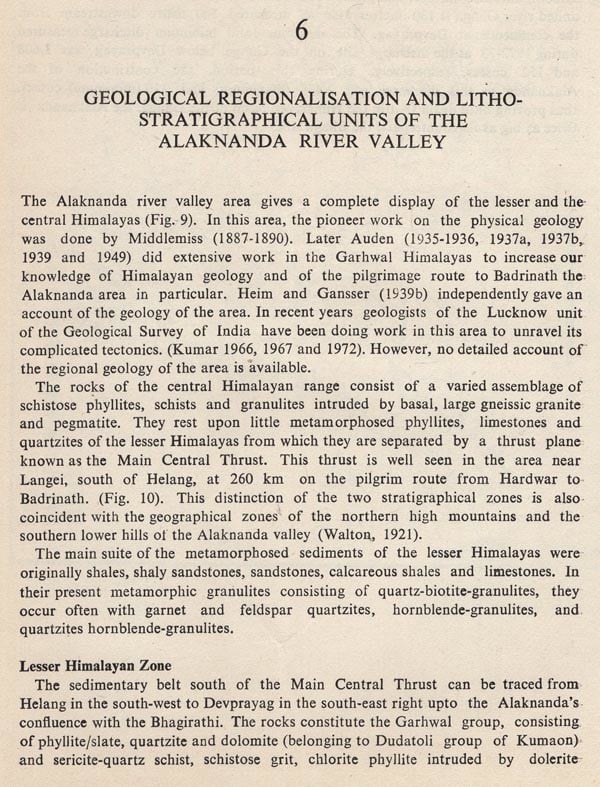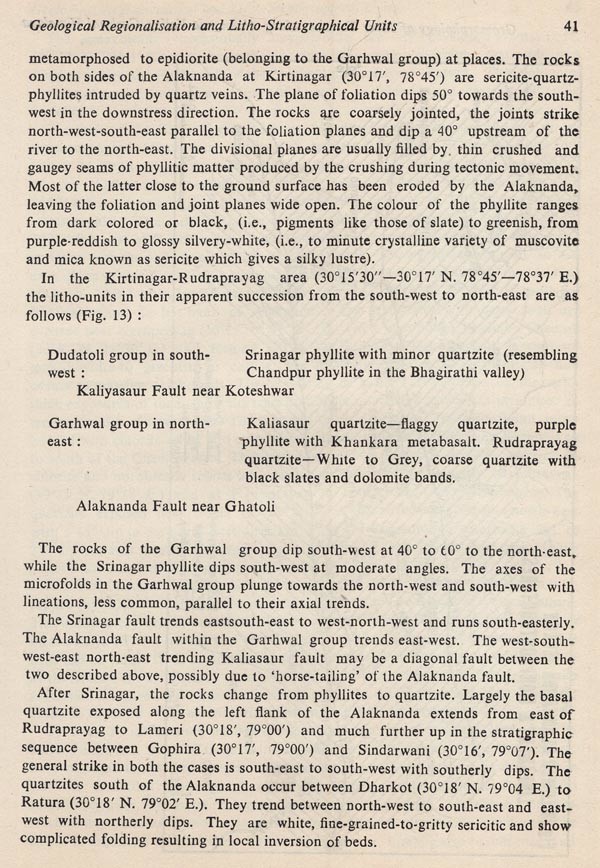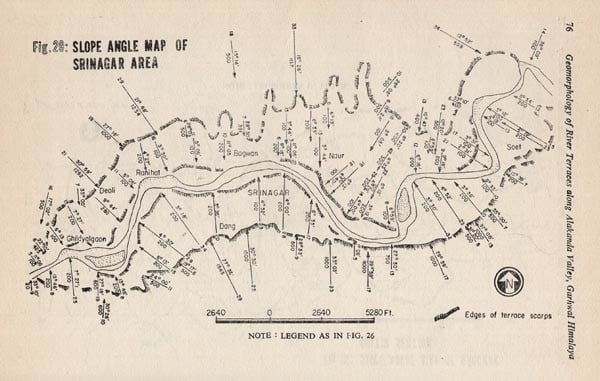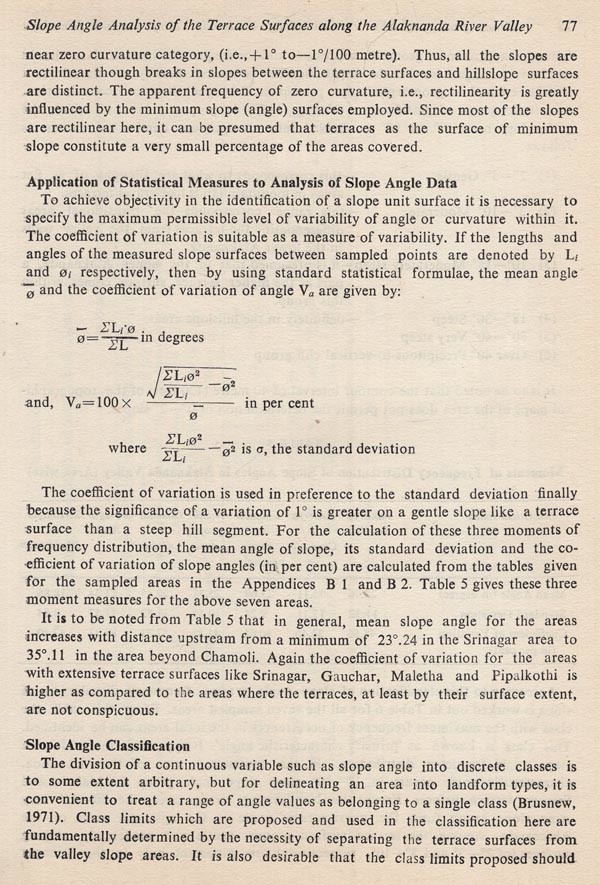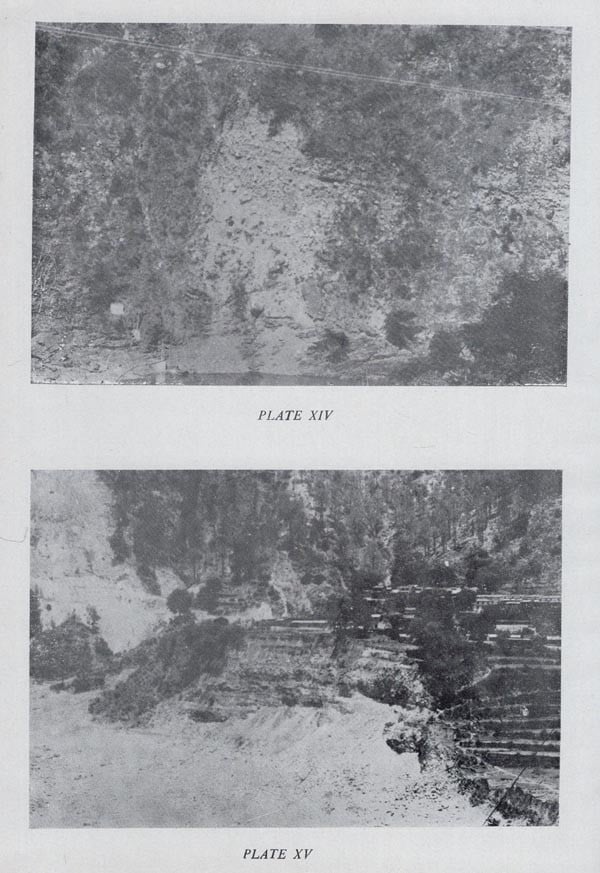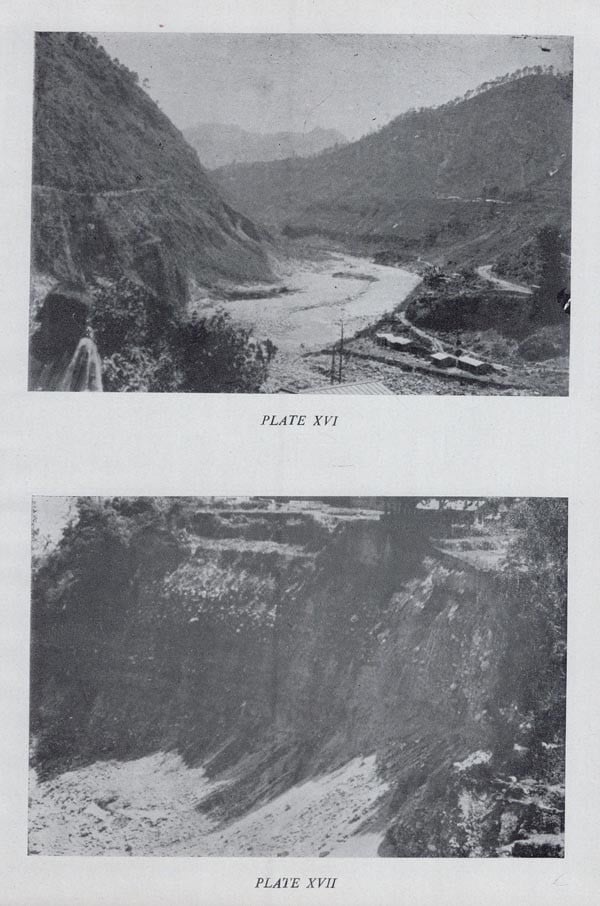
Geomorphology of River Terraces- Along Alaknanda Valley, Garhwal Himalya (An Old and Rare Book)
Book Specification
| Item Code: | AZE597 |
| Author: | Sarij K. Pal |
| Publisher: | B.R. PUBLISHING CORPORATION |
| Language: | ENGLISH |
| Edition: | 1986 |
| ISBN: | 8170182948 |
| Pages: | 182 (Throughout B/w Illustrations) |
| Cover: | HARDCOVER |
| Other Details | 10.00x7.50 |
| Weight | 530 gm |
Book Description
The book gives a systematic account of terraces in terms of their genesis both by morphology and stratigraphy. It presents an analysis of the actual terrace plain along the river Alaknanda. It is the result of intensive investigations carried out practically along the entire course of the river. The present book is a pioneering study of the Himalayan terraces. It serves as an important addition in the literature on geomorphology. geology and environmental study of the Himalayas.
The fluvial terraces in the lower Himalayas and the fluvioglacial counterparts in the central Himalayas are the basic elements of study of Geomorphology of the Himalayas.
The book is divided into twelve chapters and covers the subjects of geography, geology and environmental studies.
The book, an original Ph.D. work, is complete in all respects to be graded as a refer book.
The author has paid a number of visits to U. S. A., U. S. S. R., Austria, France, Australia and Bangladesh. A scholar as well as a keen observer, he is also the author of 'Statistical Technique: A Basic Approach to Geography', apart from the present one. Both his works are the outcome of his scholastic approach.
The Himalayan valleys are all in an early youthful stage of development. The author tried a morphological analysis of the actual terrace plains along the river Alaknanda from which he presumed that formation of all terrace plains is due to interruptions or a sudden intensification in the otherwise continuous process of down-cutting of the river. From the source of the river to its confluence with Bhagirathi, the river Alaknanda measures 229 km. The investigations regarding the terrace surfaces were carried out practically along the entire course of the river by a number of traverses undertaken during the field work for a period covering the summer and autumn of 1972 and 1973. Eight locations where terrace plains are typically developed were finally chosen as study areas in order to examine whether the terraces developed are due to secular tectonic uplift, tilting or climatic change or change in load-volume relation of the river. The field study areas (eight) selected are as follows:
1. Badrinath,
2. Pakhi to Kauriya,
3. Kauriya to Chamois,
4. Chamoli to Nandprayag. 5. Nandprayag area,
6. Gauchor to Goltir, 7. Srinagar area,
8. Kirtinagar to Bhaldigaon.
It is apparent from the above that the terraces have been well developed along Alaknanda valley. The author was interested in the study of recent terraces so that the terrace deposits should not have any glacial relics related to Pleistocene. So, except for the Badrinath area, all the study areas are in the lesser Himalayas below the Main Central Thrust.
**Contents and Sample Pages**
